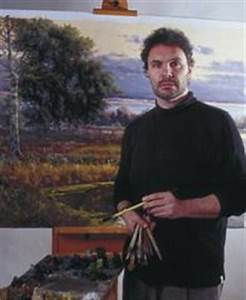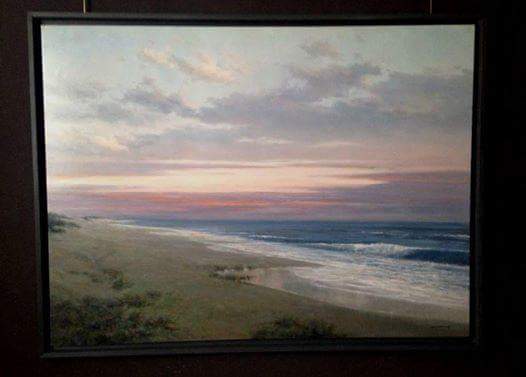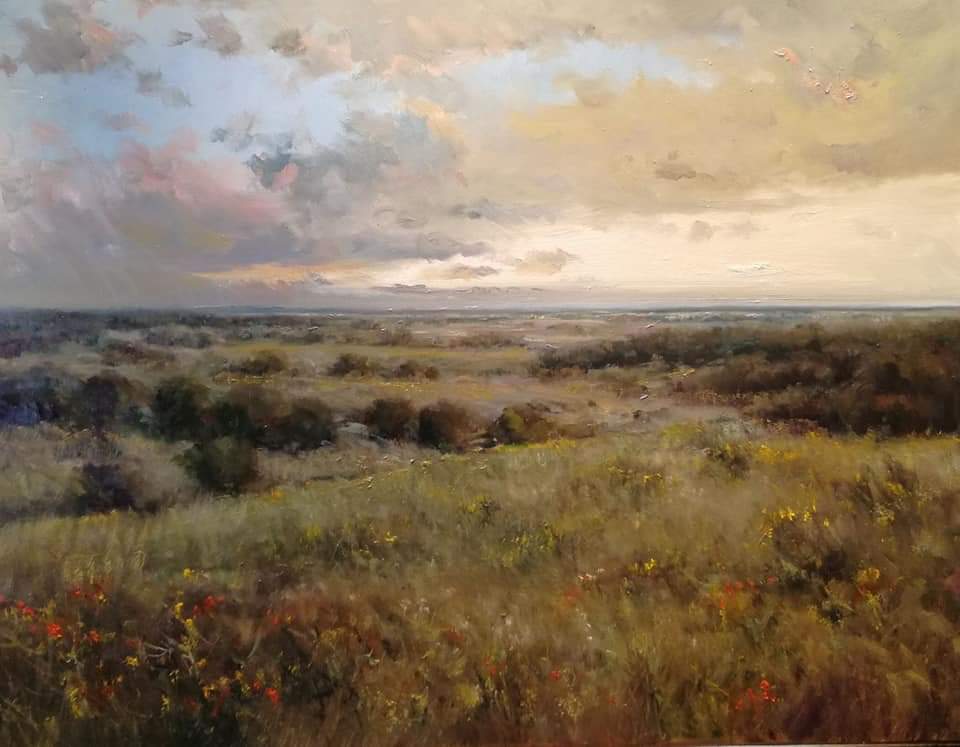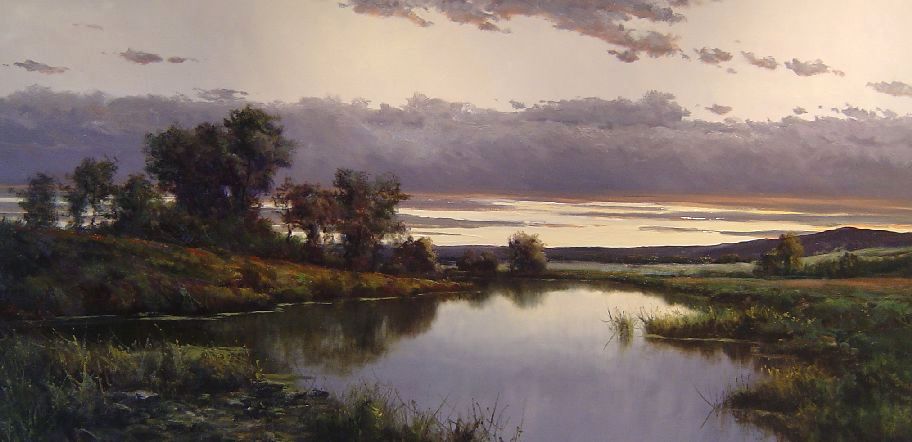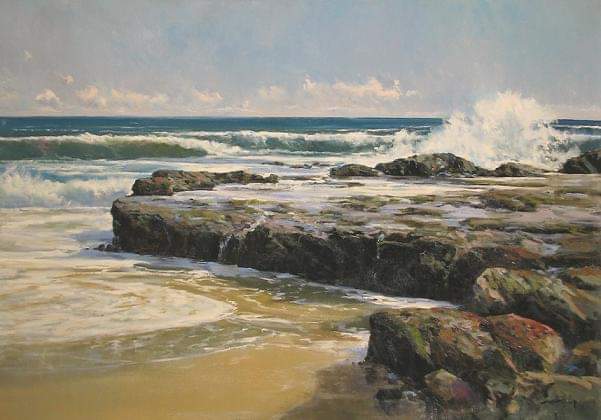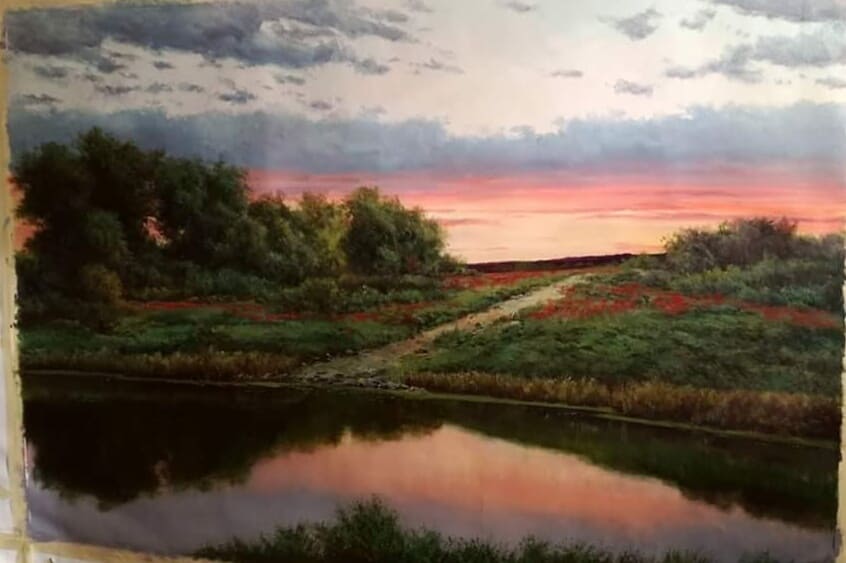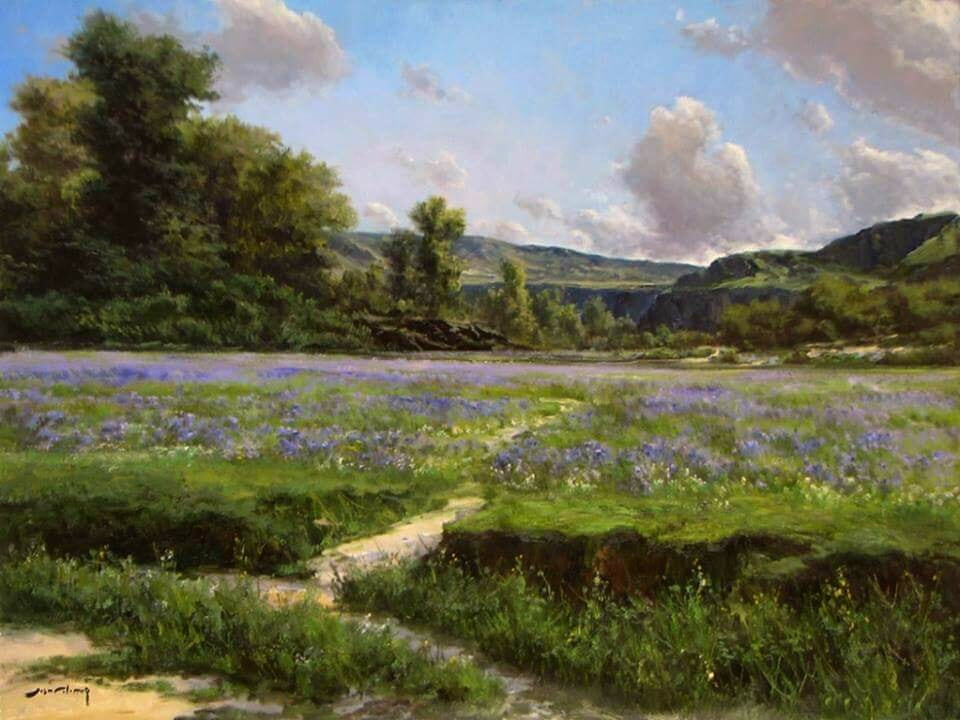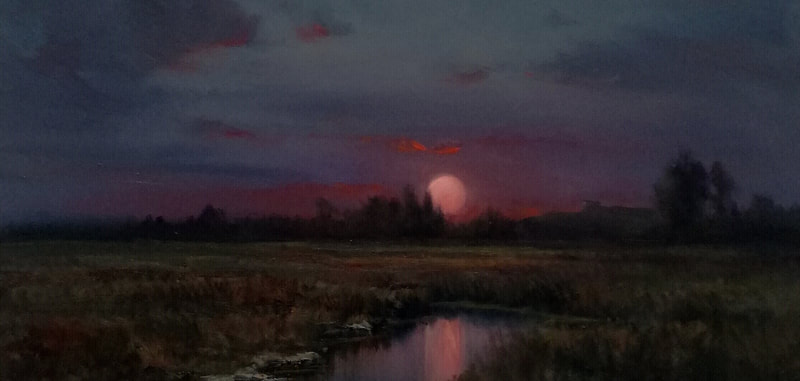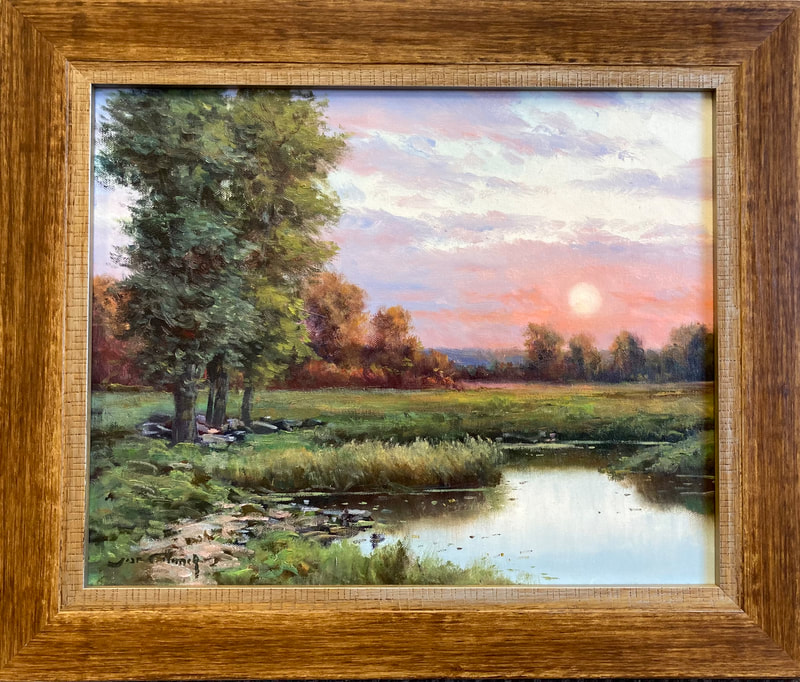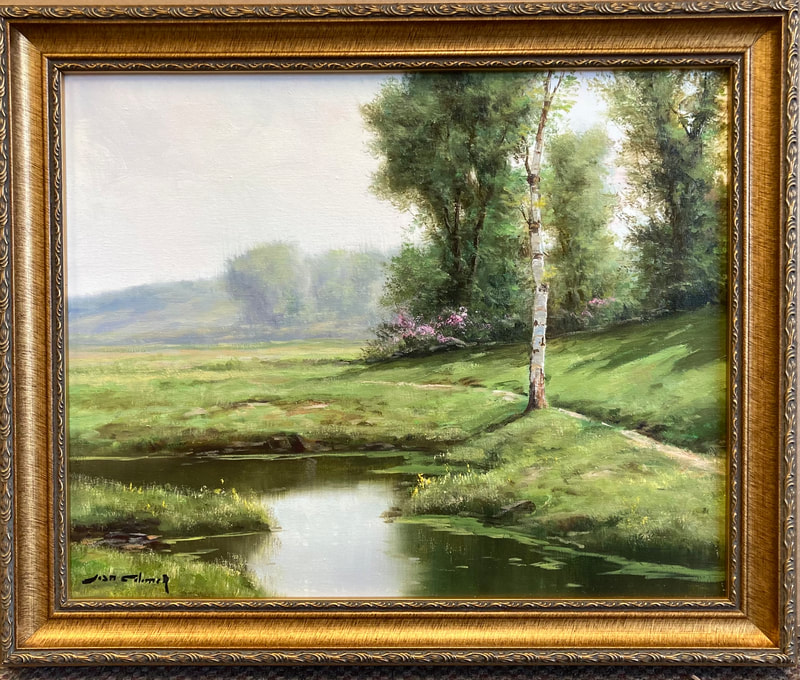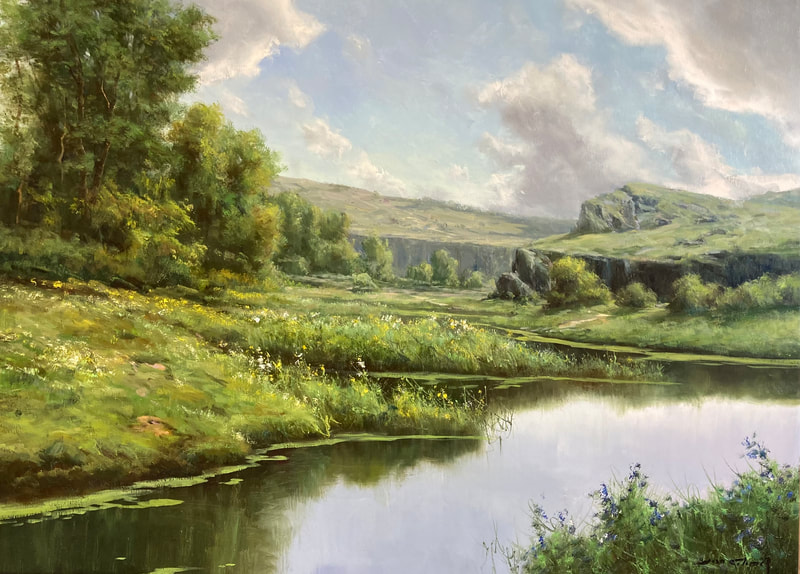Joan Colomer was raised amid the rich artistic heritage of his family and the inspirational landscape tradition immediately surrounding him. Born in San Feliu De Pallerols, near Olol in the Catalonia region of Spain, in 1965, Colomer was intimately shaped by the pastoral countryside of deep forests and rolling hills that lent its name to the Olotina Landscape School, founded by painter Joaquim Vayreda over one hundred and twenty five years ago. Colomer learned to paint at a young age, alongside of his two brothers, under the tutelage of his father, also an artist.Colomer painted steadily, mastering complicated techniques quickly, interrupting his rapid progress only to attend university in Barcelona. After receiving his degree in philosophy and liberal arts, Colomer based himself in Madrid and travelled extensively to study masterpieces in the world's greatest museums. Colomer ardently studied the styles of master painters while painting and intensively developing his own. In 1990 he married and continued his studies in Madrid at the Municipal School of Beaux Arts. Soon after, he started exhibiting work in both Barcelona and Madrid. In 1993 Colomer moved to the countryside where he currently resides with his wife and two children.
For Colomer, painting is primal. I can't think of living without doing it. To say it in other words, I live to paint. This consistent and driving force in his life led him to constantly self-analyze. If I paint a landscape or even if I decide to paint a concrete object, it is because it has brought to my mind some remembrances and associations that I have to express urgently. Something very different is the result. I never know which way the painting will go while I'm working because sometimes the painting comes to life and develops its own destiny.
To Colomer, the sky sets the tone and intensity of the work. It is the most important part of his piece. Slowly, one color calls another; it's nearly a question of obedience. I can't force the harmonies. They just flow from my hand. For Colomer, the harmony just happens. When asked who his artistic heroes are, Colomer eloquently replies, I'd like to have Beruete's touch, Sorolla's light, Hopper's balance, Corot's gracefulness, Daubighny's vision, Monet's color, Vermeer's mystery, Mauve's atmosphere, and Velázquez's knowledge. The influence of each can be seen in Colomer's work.
The roots of my artistic expression are both deeply cerebral and emotional. I realized this one morning, looking at my father, who was about to start a new work. He stood there, looking at the white canvas, for a long time. I tried to feel what was happening in those moments, an impulse, and urgent necessity of self-expression. That is the origin which later becomes an intuition, a thought's structure, an artistic design creation. Having everything ready, his hand started to form. At that time I realized that Leonardo was right, 'Painting is a mental act.'
For Colomer, painting is primal. I can't think of living without doing it. To say it in other words, I live to paint. This consistent and driving force in his life led him to constantly self-analyze. If I paint a landscape or even if I decide to paint a concrete object, it is because it has brought to my mind some remembrances and associations that I have to express urgently. Something very different is the result. I never know which way the painting will go while I'm working because sometimes the painting comes to life and develops its own destiny.
To Colomer, the sky sets the tone and intensity of the work. It is the most important part of his piece. Slowly, one color calls another; it's nearly a question of obedience. I can't force the harmonies. They just flow from my hand. For Colomer, the harmony just happens. When asked who his artistic heroes are, Colomer eloquently replies, I'd like to have Beruete's touch, Sorolla's light, Hopper's balance, Corot's gracefulness, Daubighny's vision, Monet's color, Vermeer's mystery, Mauve's atmosphere, and Velázquez's knowledge. The influence of each can be seen in Colomer's work.
The roots of my artistic expression are both deeply cerebral and emotional. I realized this one morning, looking at my father, who was about to start a new work. He stood there, looking at the white canvas, for a long time. I tried to feel what was happening in those moments, an impulse, and urgent necessity of self-expression. That is the origin which later becomes an intuition, a thought's structure, an artistic design creation. Having everything ready, his hand started to form. At that time I realized that Leonardo was right, 'Painting is a mental act.'

